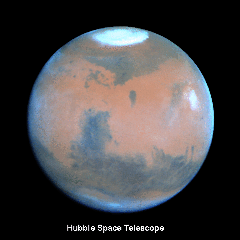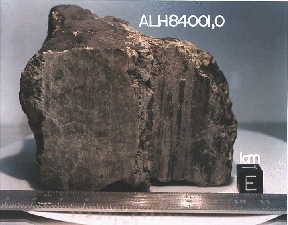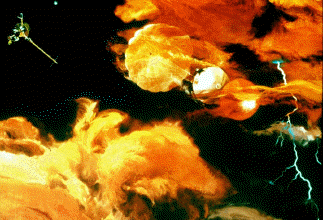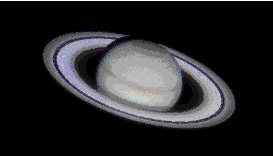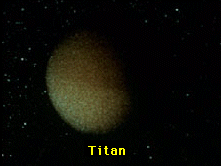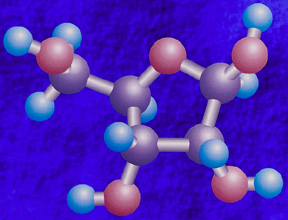The Environment of Mars in the Past
In the past, Mars was much different than it is today. There is much evidence that liquid water once flowed on the surface of Mars. Although calculations show that both the Earth and Mars should have been frozen in their early history due to the weak luminosity of the sun, both planets show ample evidence of flowing water very early in their histories, which suggests that they both must have had thick atmospheres with a significant greenhouse effect in place to keep the surface warm. With a liquid water habitat and a thicker atmosphere, life may have once thrived.
The atmospheres came from volcanoes which belched gases forth from the interior. Even today on Earth, volcanic eruptions produce a great deal of water vapor. The water vapor eventually condenses into the oceans. Mars was sufficiently cool for water vapor to eventually be absorbed into the ground and freeze like tundra in the Canadian northwest. Today scientists estimate that a large amount of water is frozen into the surface of Mars. They estimate this happened about 2.8 billion years ago. By comparison, check the geologic record for where the Earth was at that time.
Mars is small, and so cooled off very rapidly. There was not much plate tectonics on Mars, and not much volcanism either. (This compares to the Earth where volcanism continues today). Today, unlike the Earth where the surface plates still move around and create earthquakes, Mars' surface is fixed. This means no new releases of gas. It also means that carbon dioxide, which is absorbed into the ground and ocean on earth, is absorbed into the ground of Mars and is never released.
Compare this environment with Earth of the past.


